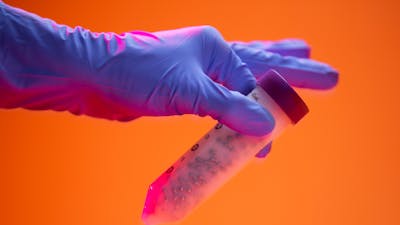Contamination of food by microorganisms such as certain bacteria, viruses and fungi is a constant concern, with even miniscule amounts of certain species posing a risk for foods to become unsafe and spoiled during storage. Current safety and quality tests are often not sensitive enough to detect rare species, and because they first require the enrichment of pathogens, they can take 48 or more hours to be completed.

Wyss Institute researchers have leveraged their pathogen capture platform – originally developed for sepsis diagnosis and therapy – to devise a technology that is able to rapidly isolate contaminants from different food products in sufficient amounts to allow immediate testing for specific microorganisms without the need for further enrichment. This approach could potentially shave days off currently used food-testing protocols and help minimize health risks, and economic losses, in the food industry.
The RAPID method is based on FcMBL, a genetically engineered version of Mannose Binding Lectin (MBL), a natural human blood protein that binds to complex carbohydrates on the surface of pathogens. FcMBL was demonstrated by the Wyss Institute’s team to capture more than 110 different live species from all known pathogen classes, as well as debris from dead pathogens known as ‘Pathogen-Associated Molecular Patterns’ (PAMPs), which by themselves also trigger dangerous inflammatory reactions in the human body.
When coupled, for example, to magnetic beads, FcMBL-bound pathogens and PAMPs can be efficiently and easily isolated from complex food samples and processed into a ‘working sample’ that may be used as input for contaminant-specific polymerase chain reaction (PCR) assays, solid-phase enzyme immuno-absorbent assay (ELISA) and metabolite-based methods, as well as MALDI-TOF mass spectrometry assays, which quickly inform about the levels of pathogen-derived nucleic acids, proteins, or metabolites.
In addition to microbial food contaminations, the RAPID capture method can also be applied to the analysis of environmental samples, including water and soil samples, to improve environmental monitoring and microbial research at sites of interest.

1/5 These images show how the RAPID method is used to first bind contaminants from a food source, such as yogurt, to FcMBL-coated magnetic beads in a standard test tube, and how the beads are isolated from the food source again in a magnetic field. Credit: Wyss Institute at Harvard University 
2/5 These images show how the RAPID method is used to first bind contaminants from a food source such as joghurt to FcMBL-coated magnetic beads in a standard test tube, and how the beads are isolated from the food source again in a magnetic field. Credit: Wyss Institute at Harvard University 
3/5 These images show how the RAPID method is used to first bind contaminants from a food source such as joghurt to FcMBL-coated magnetic beads in a standard test tube, and how the beads are isolated from the food source again in a magnetic field. Credit: Wyss Institute at Harvard University 
4/5 These images show how the RAPID method is used to first bind contaminants from a food source such as joghurt to FcMBL-coated magnetic beads in a standard test tube, and how the beads are isolated from the food source again in a magnetic field. Credit: Wyss Institute at Harvard University 
5/5 These images show how the RAPID method is used to first bind contaminants from a food source such as joghurt to FcMBL-coated magnetic beads in a standard test tube, and how the beads are isolated from the food source again in a magnetic field. Credit: Wyss Institute at Harvard University
